From May 14th – May 28th, I went on a study abroad trip to Greece. The trip was with the classical mythology course taught by Mark Buzbee and the purpose of it was to get a better understanding of the myths that we were studying. As for the trip itself, it was an amazing experience. Throughout the trip, we went to a total of eight cities. The cities that we went to were Athens, Delphi, Olympia, Epidaurus, Eleusis, Mycenae, Nafplio, and a brief stop in Thebes. Our group spent a total of six days in Athens, one in Olympia, three in Nafplio with each day having a day long excursion to Epidaurus, Eleusis, and Mycenae, and one in Delphi and a two to three hour stop in Thebes.
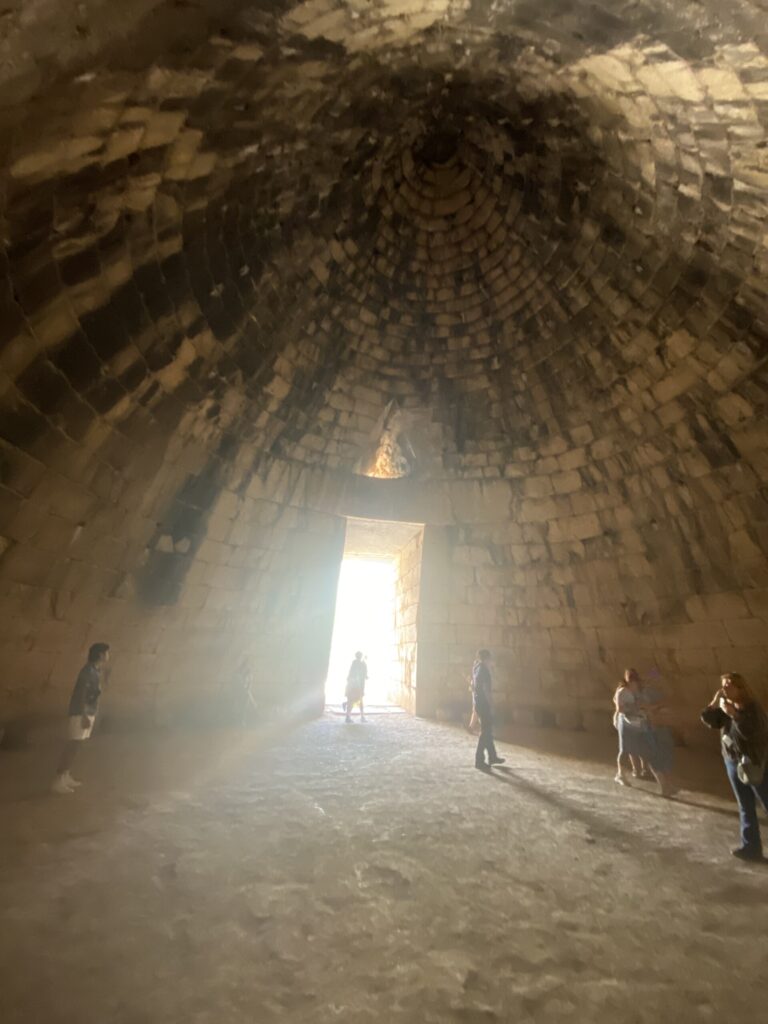
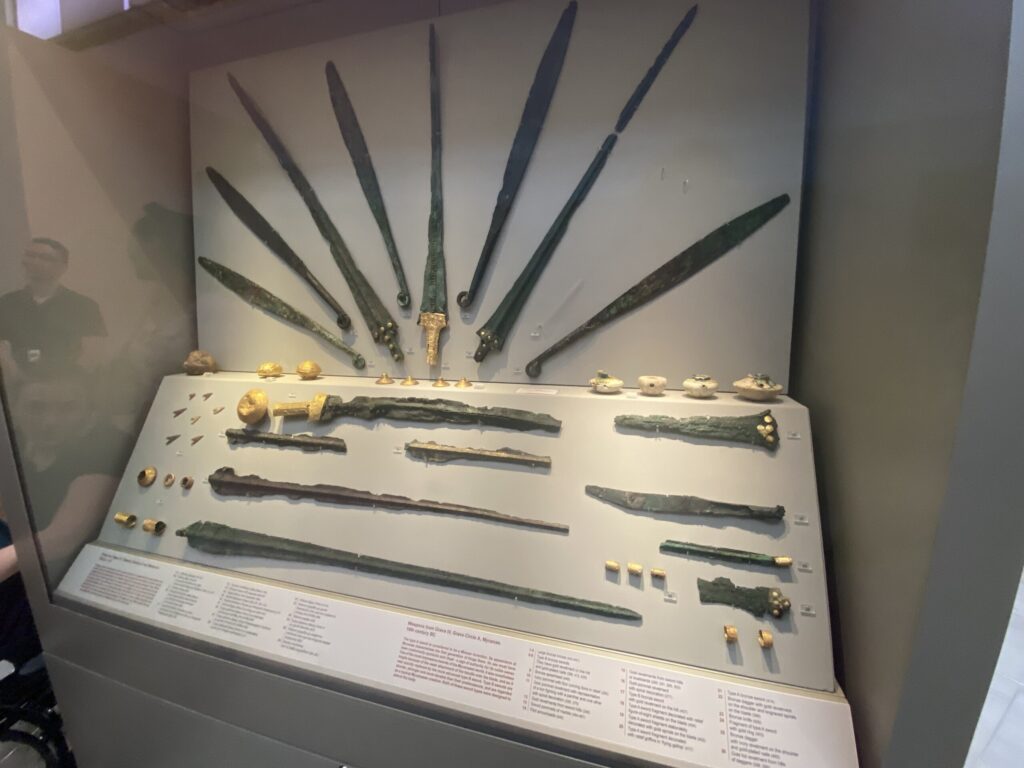
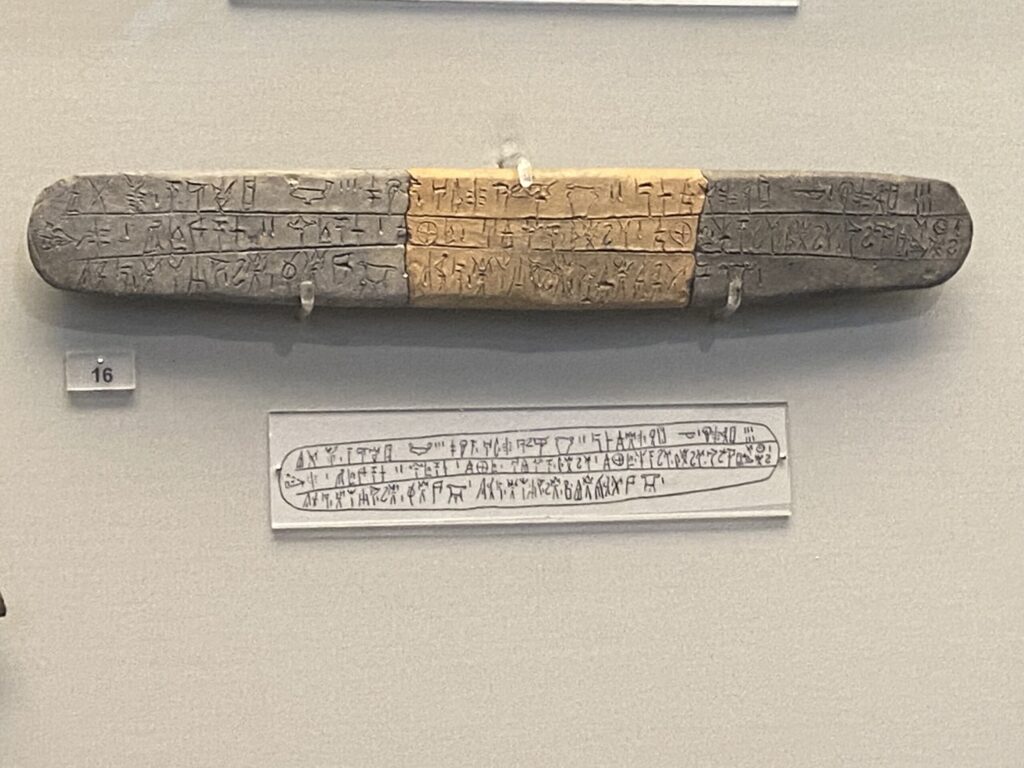
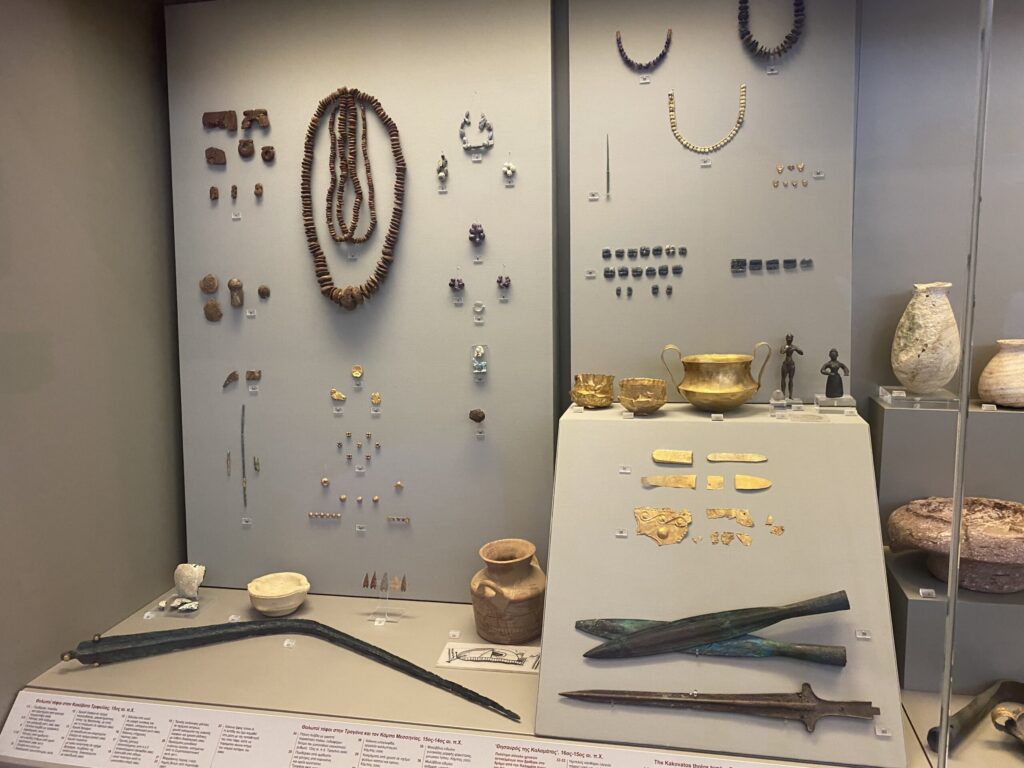
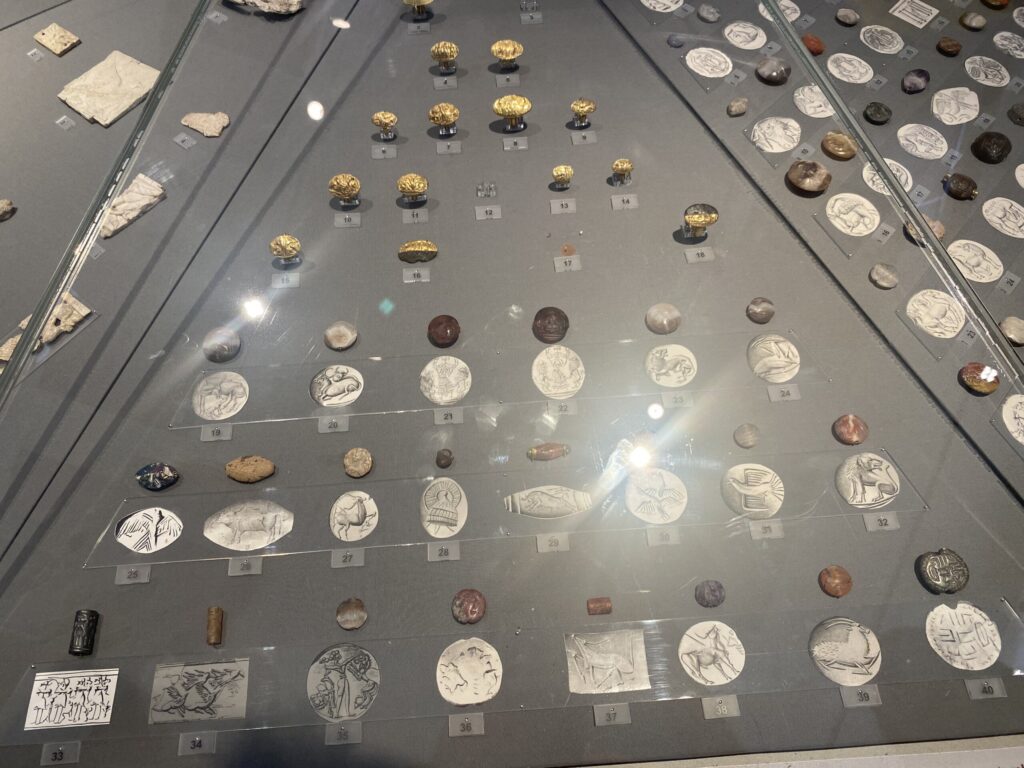
Every site that our group visited held an incredible mix of history and mythology. While our lectures had largely focused on the mythology side of things, it was still interesting to learn more about the historical side of things as well. For the tours, it was interesting learning about both the history of the places we visited and seeing how it was incorporated into the mythology. Pretty much every site our group visited was accompanied by a museum. These museums would typically house a combination of a model of what the site would have looked like at its height, artifacts from the sight throughout history, and a rundown on both the history and the surrounding mythology from the site. By going on the trip, I learned far more about the sites than I would have by just taking the standard classical mythology class. Since the class mainly focused on the myths surrounding the places that we visited, the history of the sites (both ancient and modern) was more or less new material. I had originally wanted to go on the trip to visit the actual sites that we learned about from the myths we read during class. While there was plenty of mythology around each of the sites, the tours more so revolved around the history of the sites.
A couple of the sites that I thought encapsulated this combination of the museum and the mythology were our group’s visit to the Acropolis, the stadium at Olympia and the walking tour of Athens. For the Acropolis in Athens, we first went to the actual site and took a look at all the ancient buildings that still stood to this day. Seeing the Parthenon, the theater of Dionysus, and everything else that was there seemed to bring to hammer home there were real places associated with the myths that we learned about in class. Going to the museum afterwards was a chance to learn about the history of the acropolis from its burning during the wars against Persia and other ancient civilizations or more information about the architects who designed it. Overall, it was an interesting experience and one that I personally think ended up being a worthwhile addition to the classical mythology trip. The same goes for the other two activities that I mentioned. While there might not have been as much myth associated with Olympia and some of the sites that we saw around Athens, there was still a considerable amount of history attached to them.
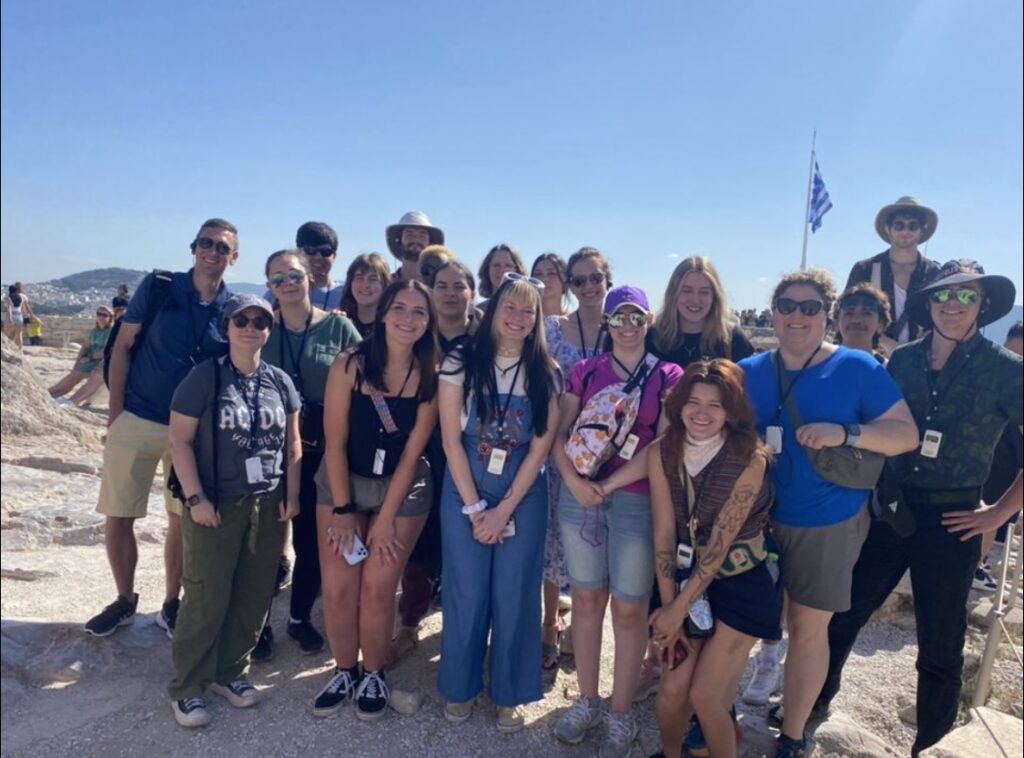
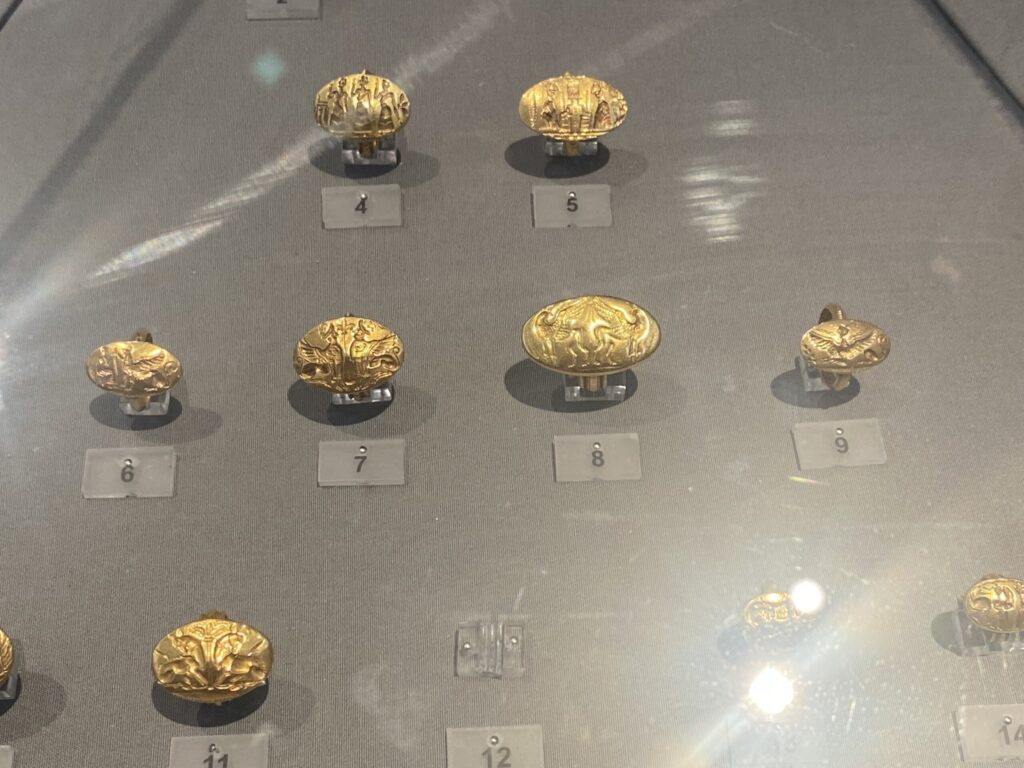
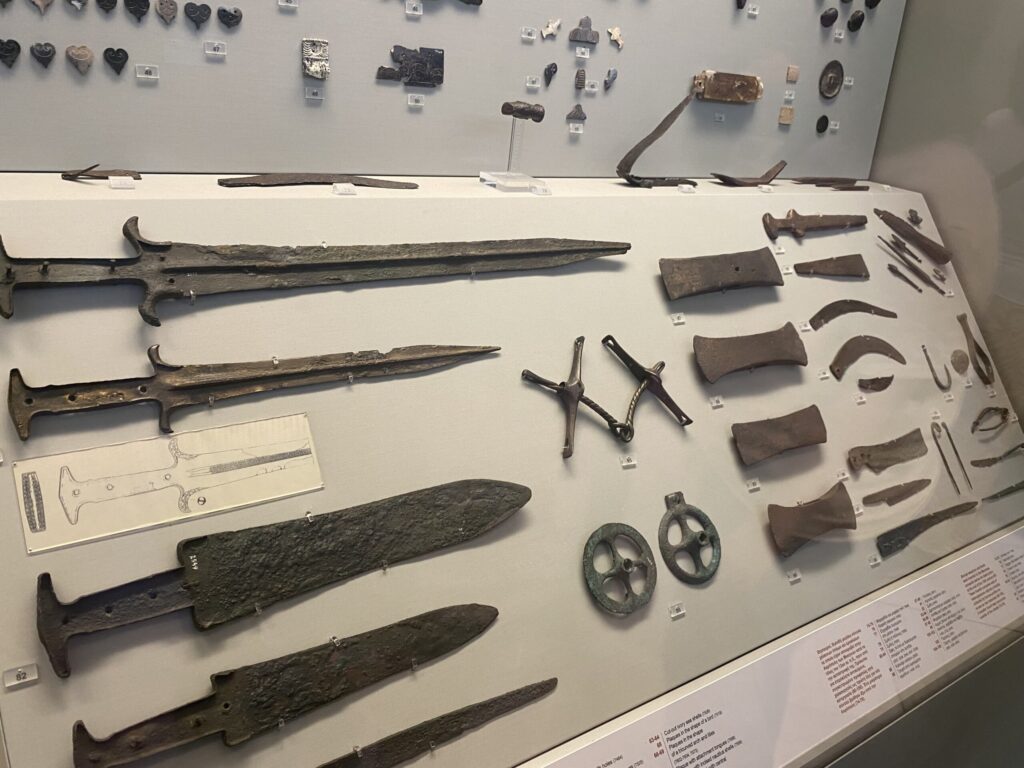
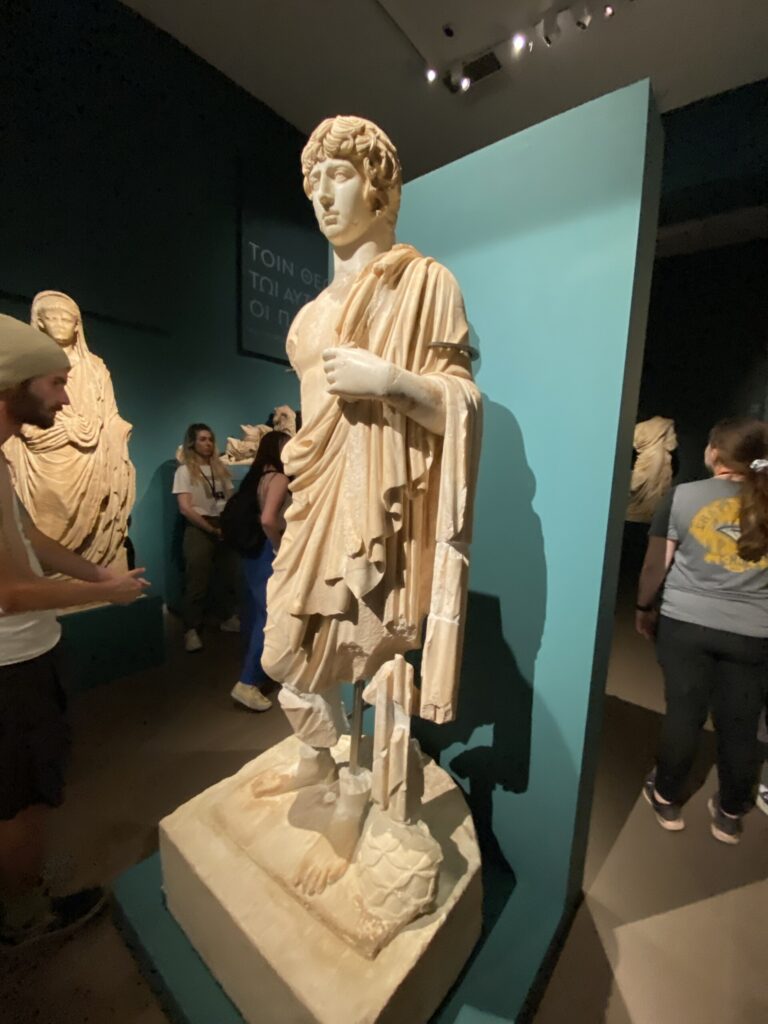
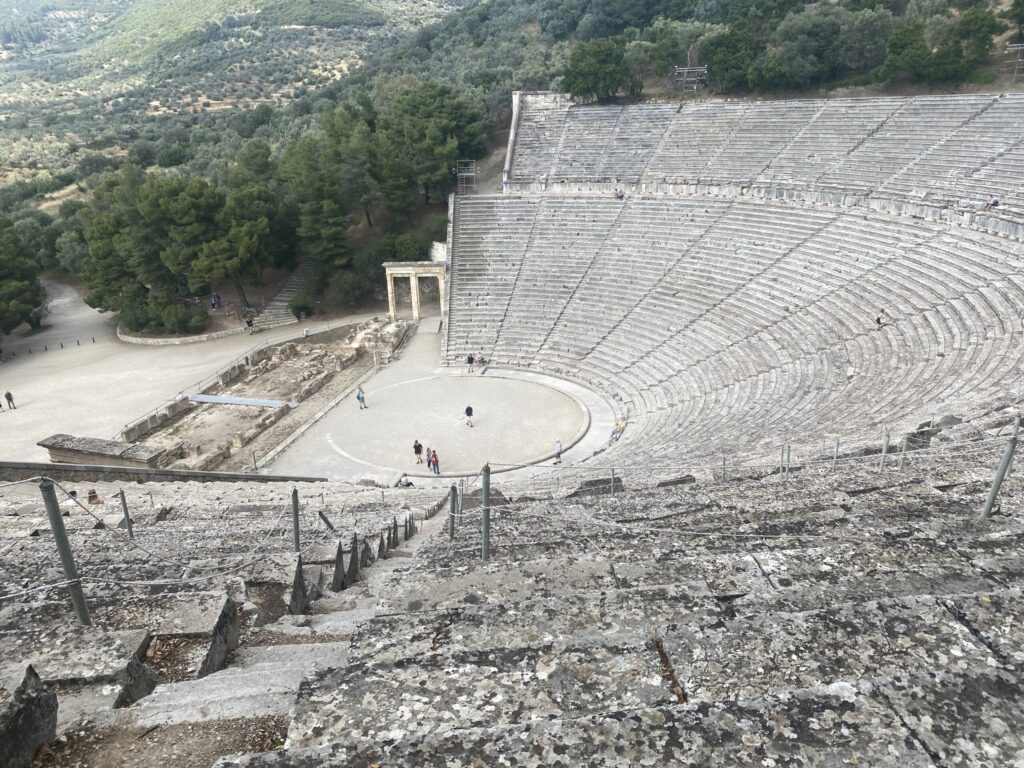
For Olympia, the significance of the site was more so learning about the original Olympic games that continue on to this day. Learning about them, while something that could be done back home via the internet, seemed to feel far more engaging and impactful when touring the sites. Being there just seemed to add a whole new layer of comprehending the significance of such a place than if the information had been learned in the classroom or through Google. The same goes for the walking tour of Athens on our first day. Jet lag and exhaustion may have tampered the mood during the tour but learning about the several historical sites, both ancient and modern, throughout the city was an interesting experience. What made the tour stand out was the combination of ancient Greek and Roman sites such as Hadrian’s arch or the ruins of a temple to a Greek god were all in the same city as buildings with modern architecture and religious buildings. Another site that was similar to this was our visit to Mycenae. There were only a few myths associated with the place as the only myths associated with it was Agamemnon and his death. While the myths and plays he’s associated with were interesting, the artifacts that were at the museum were far more intriguing. If the study abroad trip hadn’t happened, then that experience would not have happened.
During the trip, there was also plenty of time for relaxation where the group could just hangout with whoever they wanted and go wherever they wanted. It was this time between excursions and tours that allowed us to really connect and get to know each other better than we did during class. Originally, I had joined the study abroad trip because I had wanted to learn about the myths and then see the sites that they took place at. While this was the primary focus of the trip and one that I enjoyed, I also enjoyed the more social aspects of it as well. It was primarily just hanging out during meals and at the hotels but it was still fun getting to know the people in my class better. Still, I felt like I was more open and talkative with the other students on the trip than in the classroom. All in all, going on the study abroad trip was an incredible experience as not only did it provide more information about the significance of the sites we learned about in class thus making the trip more enjoyable but it also allowed for us to get to know each other much better than if we had not gone on the trip.
Ethan Hof (BA History) spent part of May 2023 participating in a faculty-led trip to Greece with the Classics department. Ethan had the following to say about studying abroad, “The trip was amazing. During the school year, we largely leaned about the myths associated with each of the places that we visited. While the tours were mainly focused on the historical aspect of the sites rather than the mythology, it was still an interesting learning about the role these places seemingly only found in mythology had an impact on history. Going to Greece and learning about said history at the places themselves instead of learning about it through a book or lecture seemed to drive home the point that these were actual places and not made up by someone a couple thousand years ago.”
Leave a Reply